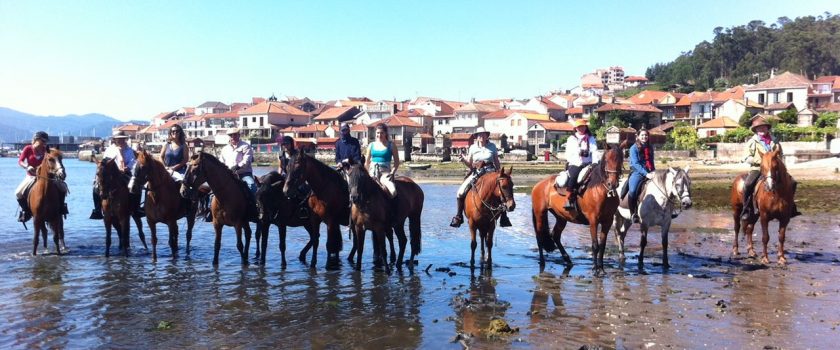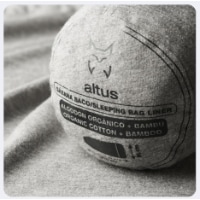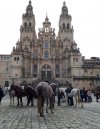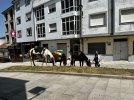- Time of past OR future Camino
- Last 114km C. Frances, Jul 21
2023 - C. Primitivo
Ok, so I'm in trouble now...
I paid FindPenguins to make a book out of my "proof of life" posts to my husband during my Camino Primitivo, and was showing it to my brother-in-law, his wife, and their teenage daughter before Thanksgiving dinner. (BTW, shameless plug for FindPenguins - great quality book).
In the process, I mentioned that for Compostela, the requirement is for a bicigrino to travel 200km, but for a person (and for a horseback rider), the requirement was 100km.
Too late, I realized that my horse-mad niece was now interested, to the point where she turned to her mom and dad and asked if the horse she rode every week could be shipped to Spain.
After we quit chuckling and pointing out that none of us made that kind of money, I realized that I had *no* idea whether people still rode horseback to Santiago, where they stayed, how they took care of their horses, etc.
So, esteemed group mind - is there a company that does horse pilgrimages? Or are the remaining horse pilgrims Spanish natives with deep knowledge of stabling locations and requirements? I owe my slightly exasperated brother in law an answer... ;-)
I paid FindPenguins to make a book out of my "proof of life" posts to my husband during my Camino Primitivo, and was showing it to my brother-in-law, his wife, and their teenage daughter before Thanksgiving dinner. (BTW, shameless plug for FindPenguins - great quality book).
In the process, I mentioned that for Compostela, the requirement is for a bicigrino to travel 200km, but for a person (and for a horseback rider), the requirement was 100km.
Too late, I realized that my horse-mad niece was now interested, to the point where she turned to her mom and dad and asked if the horse she rode every week could be shipped to Spain.
After we quit chuckling and pointing out that none of us made that kind of money, I realized that I had *no* idea whether people still rode horseback to Santiago, where they stayed, how they took care of their horses, etc.
So, esteemed group mind - is there a company that does horse pilgrimages? Or are the remaining horse pilgrims Spanish natives with deep knowledge of stabling locations and requirements? I owe my slightly exasperated brother in law an answer... ;-)
























